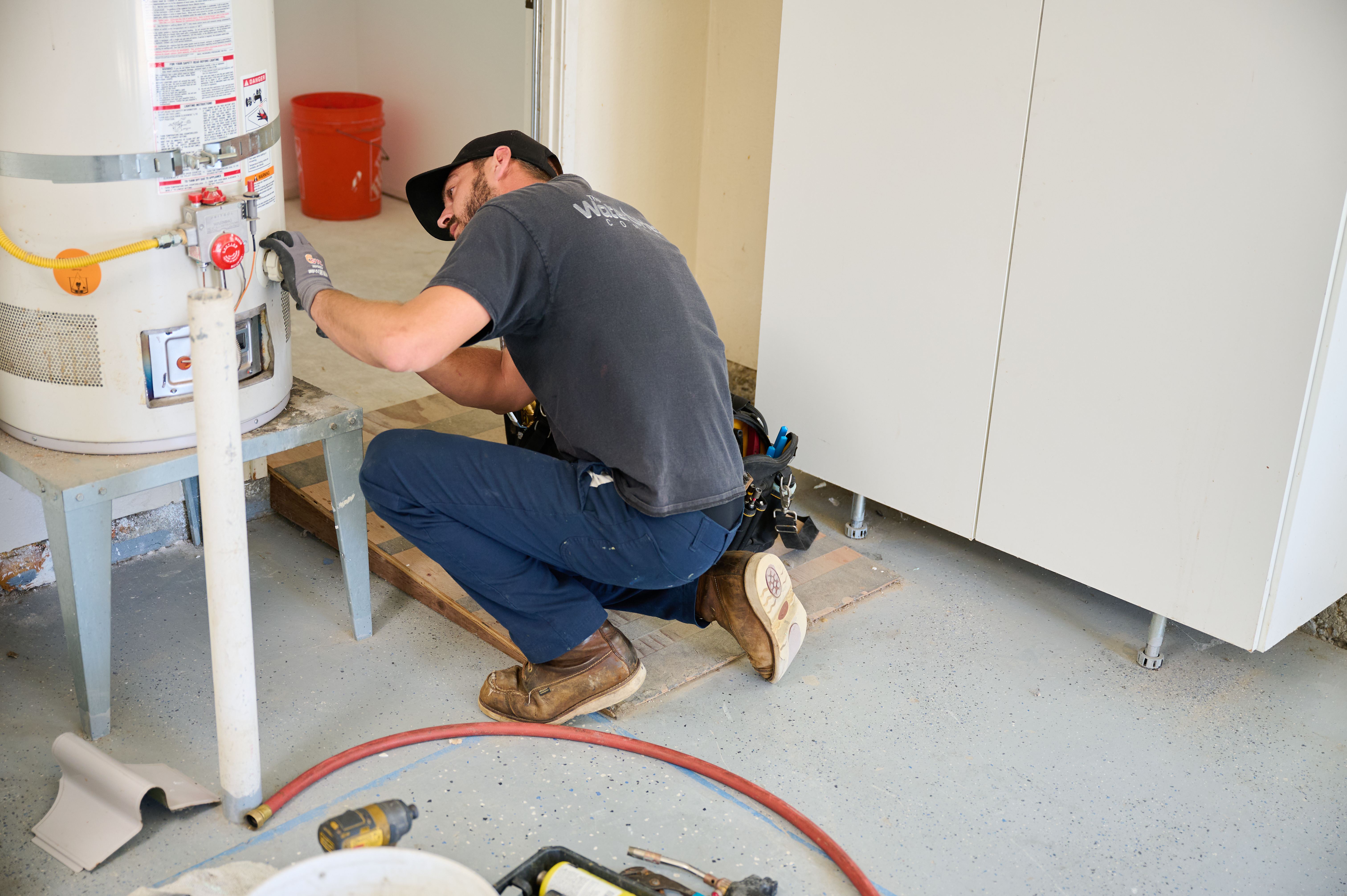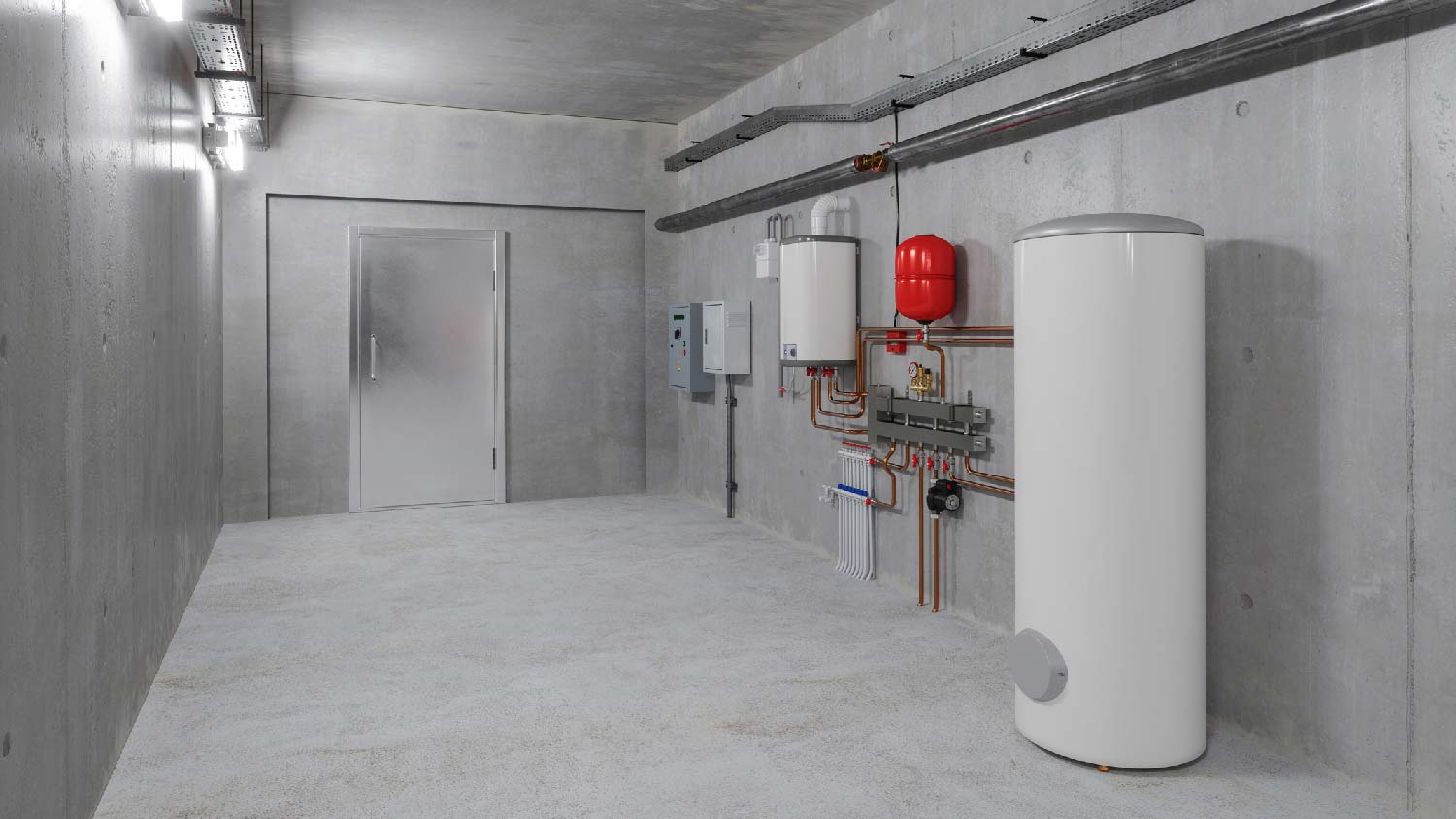
Tankless water heater costs in Columbus, OH depend on the size of your water heater, location, fuel type, and more. Keep reading to calculate your expenses.
Get out the gunk and keep the hot water flowing


Doing the labor yourself goes a long way.
Almost no one likes a cold shower. Descaling your tankless water heater will help keep it running efficiently and make sure you have hot water any time you need it (or just want it for a relaxing bubble bath). This project will be a breeze if you’re already somewhat familiar with the parts of your tankless water heater, making it perfect for the all-around DIYer. However, hiring a plumber can save you time and give you peace of mind that the job is done properly, especially if you don’t know the difference between the valves on the tank.
When you descale your water heater regularly, you prolong its life span and prevent possible water heater failure. So no matter if you DIY this one or hire a pro, this is definitely an important project.
Some DIY repairs are great for saving money and sharpening your skills, but leave larger jobs like water heater repair to the pros. An experienced hand can ensure the task is completed safely and will prevent further damage.
The first step in learning how to descale a tankless water heater is taking care of some prep work.
First, you’ll want to go to your favorite home improvement store or website and purchase a tankless water heater flush kit. These typically come with a pump, two hoses, and a big bucket. Most kits cost between $100 and $200, but you may find some kits outside that range. After you get this, you can pop over to your local grocery store and pick up four gallons (roughly 15 liters) of distilled white vinegar.
Before you get started with the descaling process itself, you need to get some safety equipment. You’ll be working with vinegar during this process, a notorious archnemesis of the mineral deposits that can build up in your water heater. Though cleaning with vinegar is a very common practice, it can also be irritating and even damaging to your eyes, throat, nose, and skin if you don’t use it properly, according to the National Capital Poison Control Center.
For these reasons, it’s incredibly important that you wear sturdy rubber gloves, a face mask, and eye protection during this process. Food-grade vinegar is typically perfectly safe to handle, but you should always stay on the cautious side. And just as a reminder, NEVER mix vinegar with bleach.
Finally, you should locate several important valves and water heater components. You’ll see a red isolator valve and a blue isolator valve; red is for hot water, and blue is for cold water. Lastly, your gas valve should be yellow. When they’re in the “On” position, the valves should run parallel with the pipes. If they’re perpendicular to the pipes, they’re in the “Off” position.
First, you should turn both the hot and cold water off by turning each valve’s handle until it’s perpendicular to the pipes. After the water is off, turn off the gas valve. Typically, the handle for the gas valve is yellow, so it should be pretty easy to spot. Next, put your bucket underneath the hot water valve.
Next up, it’s time to drain the water heater. Place a bucket beneath the opening of the hot water valve, then twist its drain cap to fully remove it. Once removed, let the old water flow into the bucket until nothing more comes out. After all the water has drained out of the hot water side, put the cap back on and twist it to secure it, then move the bucket to the opening of the cold water valve and repeat the above steps.

Now it’s time for the hoses. Connect one hose to the pump that came with the kit and then lower the pump into the bucket, being careful to keep the power cord out of the water. Next, connect the other end of the same hose to the drain valve for the cold water.
Then, connect the second drain hose to the hot water valve, and put the other end of the hose into the bucket (it should not connect to anything else). You should be able to tighten the hoses by hand.
With the pump now in the bucket, pour four gallons of vinegar into the bucket with the old water until the pump is submerged. Open both drain valves. Then, turn on the pump to circulate the water and vinegar or descaling solution through the unit for 30 minutes.
After the pump runs for 30 minutes, turn it off and remove it from the vinegar. Hold it above the bucket and allow any excess vinegar to drain out of the pump. Then, set the pump aside and dispose of the vinegar in the bucket.
Once that’s done, you’re ready to repeat the process. Place the pump back into the bucket and pour enough vinegar into the bucket to submerge the pump. Run the pump for another 30 minutes. In total, you’ll circulate vinegar through the unit for an hour (in two 30-minute sessions).
Note that the water heater will attempt to start, but it will not be able to fire because the gas is off. If an error code appears, do not reset it; this usually happens during this process and is completely normal.
Pro tip: Move slowly to avoid spilling vinegar on a concrete floor, as the acetic acid inside the vinegar may etch the concrete surface and leave a mark that you can’t wash off.

Now that the pump has circulated the vinegar for at least an hour and you’ve turned the pump off, close the cold water drain valve. Remove the hose from the cold water valve and put the valve cap back on. As you did before, lift the pump out of the vinegar, keep it over the bucket, and allow it to drain. Set the pump aside and empty and rinse out the bucket.
Next, you’ll be flushing the heater of any leftover vinegar. Put the end of the hose connected to the hot water drain into the bucket. Instead of vinegar, this time you’ll fill the bucket with water and place the pump back inside. Open the valve to the cold water supply line and start the pump to flush the heater with clean water. Let the water circulate in the heater for at least five minutes.
To finish flushing out your unit, put your bucket under the water heater and open the drain valve on the bottom. Once no more water is coming out of your unit, you can turn off the main cold water supply valve and shut off the drain valve. Then, you can remove the drain hose and replace the drain cap.
Now is also a good time to clean the water filter, and these typically unscrew to release. If you want to double up on this DIY, remove the filter and clean it under running water to flush out any scale and debris. Then you can replace the filter (make sure you screw it back on tightly).

The hard part is over—now you can turn the hot and cold main valves and gas back on.
Once everything is cleaned up and your heater is plugged up and ready to be turned back on, it’s time to take your newly cleaned system for a test drive. Turn the water and gas lines back on and clear the error code that appeared earlier. From there, check to see that both the hot and cold water supplies to your nearest faucet are working as desired, and cross this to-do off your list.
Learning how to descale a tankless water heater is a relatively simple DIY for most people. Many plumbers charge between $45 and $150 per hour just for labor, and you’ll likely end up paying around $200 for materials after that. Since you only have to pay for the materials if you do it yourself, you could save some serious money by DIYing this one.
However, if you’re unsure that you have the time or expertise to tackle this task on your own, put down the bucket and hose and call a pro. After all, all of the hot water you use in your home runs through your tankless water heater, so it’s important to ensure that the unit is properly cleaned and reassembled. If you’re not up to the job or just don’t have time, calling a professional water heater repair technician near you is always a smart way to go.
Before you decide on a pro, vet potential hires with questions about their licensing and insurance, and whether they can provide full inspections and a warranty. They’ll also be able to give you an estimate of what you should expect to pay for water heater replacement costs, if necessary, and how much longer they expect your unit to last.
From average costs to expert advice, get all the answers you need to get your job done.

Tankless water heater costs in Columbus, OH depend on the size of your water heater, location, fuel type, and more. Keep reading to calculate your expenses.

Learn all the factors that influence the cost to install a heat pump water heater at your home.

A water heater flush costs $160 on average but can vary based on the unit size, type, labor, location, and more. Keep reading to learn how much you could pay.

Learn the step-by-step process of resetting your water heater safely—our guide provides easy-to-follow instructions to help you restore your hot water supply.

Are you not sure who fixes hot water heaters? Find out who does this kind of work and who to call to get your hot water back on tap.

Instant hot water at your fingertips is closer than you think. Learn how a hot water heater recirculation system can deliver hot water quicker than ever.